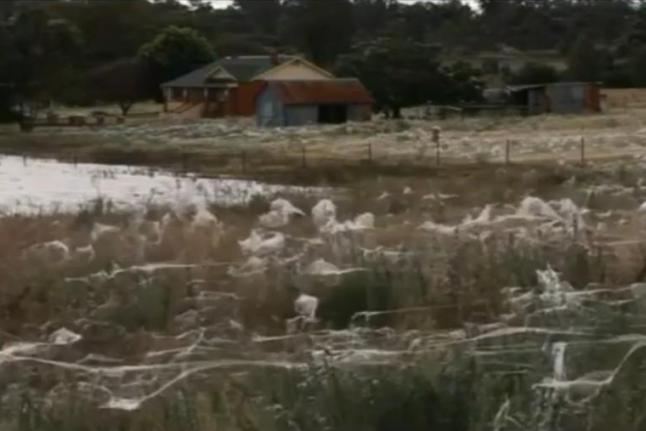
It’s Raining Spiders in Australia

GOULBURN, Australia, May 18 (UPI) — Not even the best weatherman could have properly predicted the precipitation that fell on Goulburn, Australia, over the weekend. Instead of raindrops, residents of the small town in the Southern Tablelands of Australia got baby spiders — hundreds of thousands of them.
“The whole place was covered in these little black spiderlings, and when I looked up at the sun it was like this tunnel of webs going up for a couple of hundred meters into the sky,” local resident Ian Watson told the Sydney Morning Herald.
The phenomenon known as “spider rain” usually happens in May and August, when clear skies and calm breezes are frequent. Newly hatched baby spiders climb to high elevations and send a parachute of silk into the air as they jump, catching a ride with the wind.
It’s not an uncommon migration technique, but it’s unusual for so many to take to the air at the same time. The blankets of silk that the flying spiders leave in their wake is called “angel hair.”
“They fly through the sky and then we see these falls of spider webs that look almost as if it’s snowing,” Keith Basterfield told the local paper, the Goulburn Post. “We see these vast areas of baby spiders, all coming down at once in the late morning or early afternoon.”
Basterfield, a retiree in South Australia, has been studying angel hair for more than a decade and made a plea to residents of the Goulburn (via the Post) to get in touch.
Researchers say ground spiders often use the technique to find a new home after they’ve taken to the trees to avoid an especially wet period. That’s what happened in 2012 in Southern Australia. A similar phenomenon was documented in Brazil in 2013.





